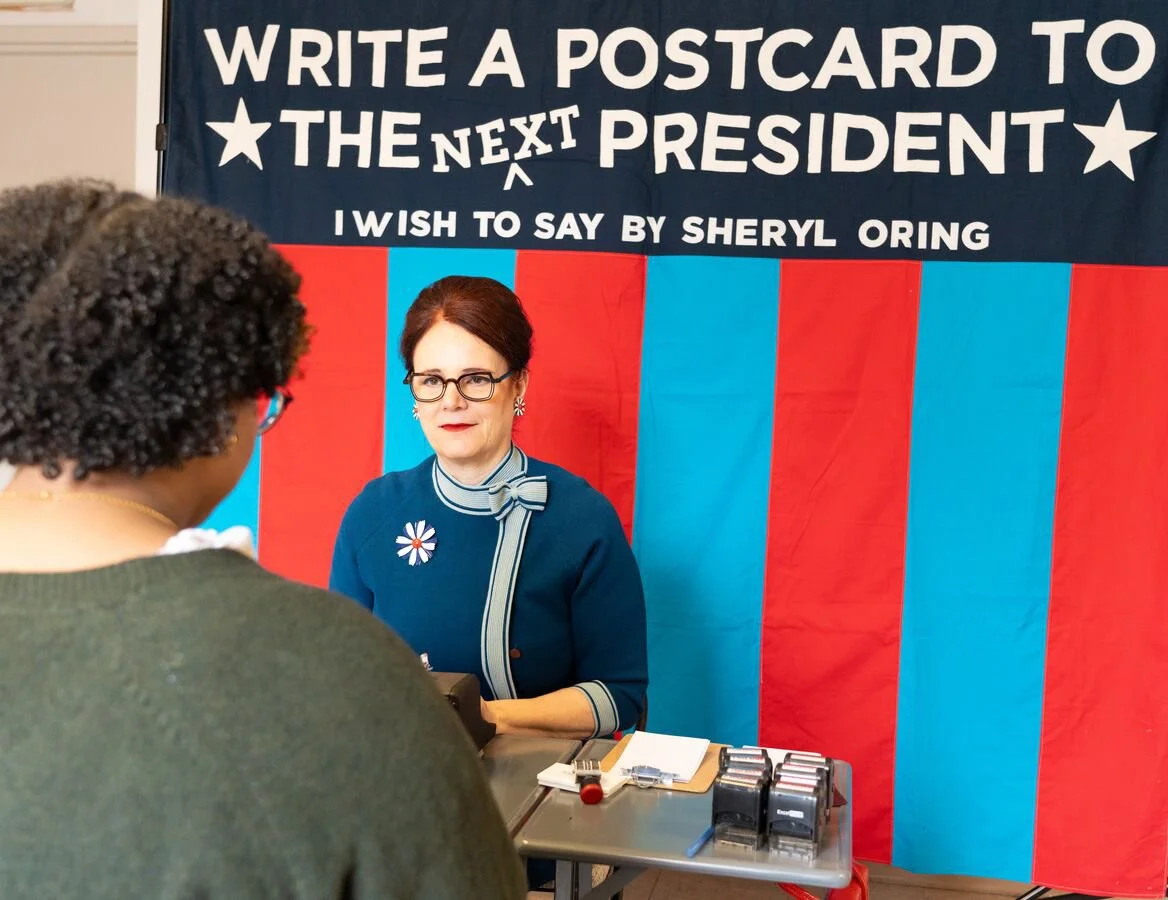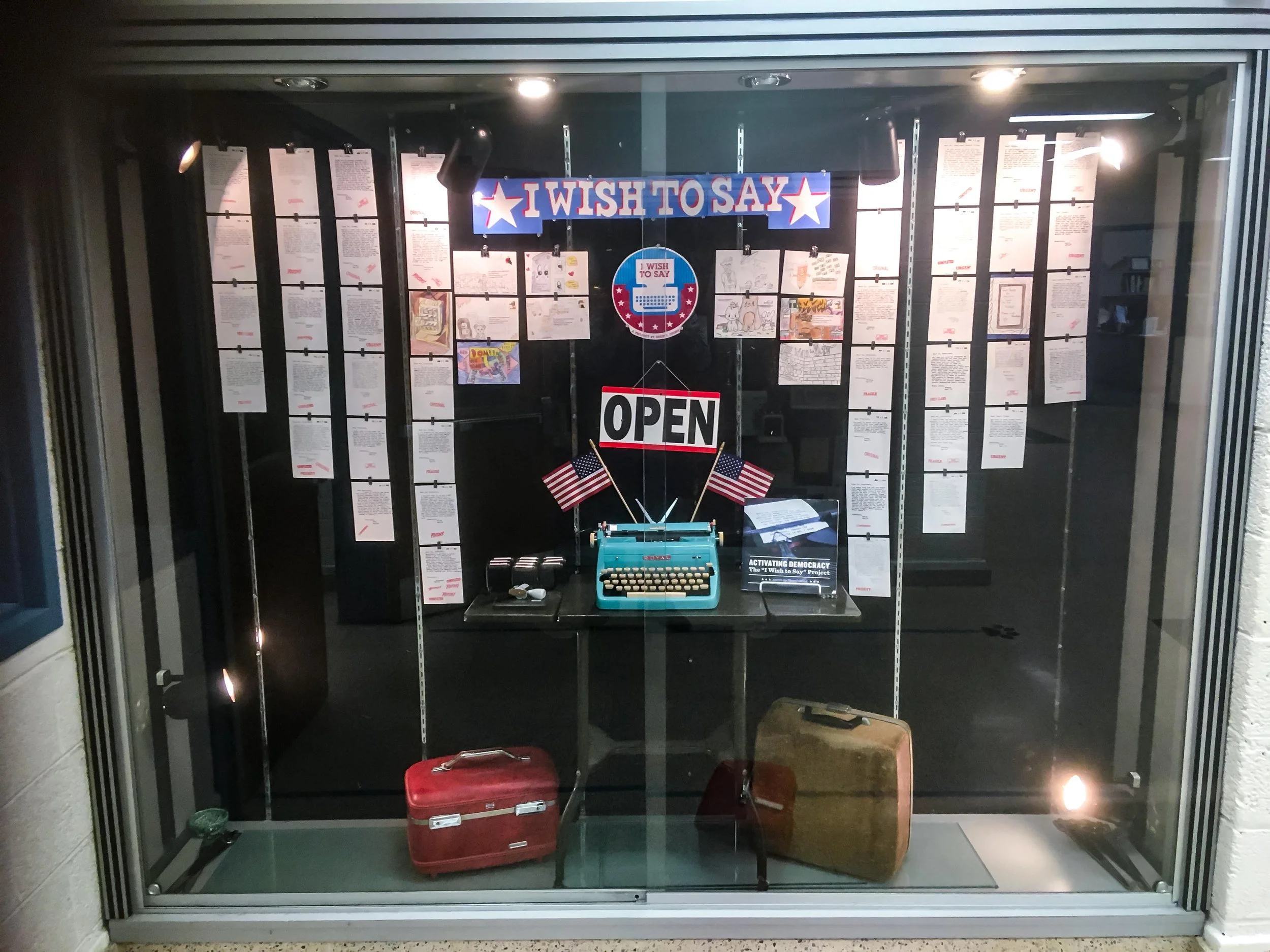Bringing Civic Engagement to Your Classroom…
The official I Wish to Say curriculum has been carefully crafted in collaboration between artist Sheryl Oring and Director of Curriculum Robert Rose of S&D Educational Learning Resources.
The official I Wish to Say curriculum has been formatted in an easy-to-navigate curriculum guide package for classes across subject matters such as Civics, ELA, Creative Writing, and Visual Arts. Included in the curriculum guide packages are all the training and supplemental resources a teacher will need to not only teach about public performance art but to foster civic engagement in their classroom in productive and constructive implementation.
Together we have looked closely at the I Wish to Say project and found a tried and true retrofit for students grades 6 through 12. The official curriculum is grounded in the National Visual Arts Standards, centered around 21st Century Skills, focused on student experiential learning, and supported by three educational pillars:
-
Encouraging students to articulate their thoughts and perspectives helps develop their analytical skills, prompting them to consider various viewpoints on civic issues.
-
The curriculum emphasizes understanding and sharing experiences, allowing students to connect with the thoughts and feelings of their peers and the broader community while formulating their viewpoints in respectful and constructive lenses.
-
By participating in activities that invite students to express what they wish to say, they learn the importance of voice and advocacy, equipping them to take informed action on issues of concern that impact their daily lives and future.
Curriculum Objectives
-
Foster open dialogues about civic topics that resonate with students. Utilizing the prompt from the "I Wish to Say" project guides students through the process of formulating their opinions on various political topics in a concise, respectful, and well-informed practice. This culminates around creating a classroom ethos that takes into consideration and validates the thoughts of one another.
-
Encourage students to express their ideas constructively through various media, such as art, writing, and public speaking. This diverse approach accommodates different learning styles and preferences while offering cross-curricular connections in civics, visual and performing arts, creative writing and English language arts.
-
Partner with local organizations to create opportunities for students to engage with civic issues beyond the classroom, allowing them to implement their learning in real-world contexts. This could look like either a public display of student postcards from the project or students creating a typing pool performance for their peers to participate at an event.
Implementation Strategies
Assessment and Reflection
-
Assess student engagement and understanding through reflective activities, such as journals or group discussions. This allows you to gauge how the curriculum has impacted their perspective on civic issues and their role in the community.
-
By incorporating the "I Wish to Say..." project into your educational framework, you are empowering students to take an active role in civic life, fostering a culture of engagement and responsibility that extends beyond the classroom.
“Quote from teachers”
- Teacher Name -
Title
Learn about
I Wish to Say Curriculum
Additional Resources
Click Below to Find Out More!
Professional Development
&
Workshop Offerings
Student
Postcard
Archive
Sign Up
for
Information & Updates
In the Classroom
Elana Anderson
New York, NY
Dean of Community Engagement & Social Justice at The Abraham Joshua Heschel School
Elana incorporated the I Wish to Say project into her school's curriculum during the 2020 school year.
Robert Rose
Art teacher at RJ Reynolds High School
Winston-Salem, NC
Robert first worked with Sheryl Oring in 2016 as a project assistant during a large-scale version of I Wish to Say in New York City. As an art teacher in North Carolina, Robert has incorporated Sheryl's project into his classroom curriculum with both middle school and high school students.
“The kids approached this as a truly honest open forum that let them speak as who they are in a really genuine way just like they did in Sheryl Oring’s official project,” ”







